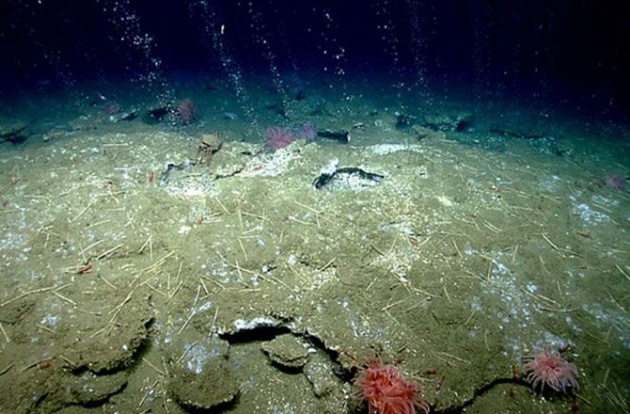
There are some pretty strange creatures found in the extreme temperature and pressure environment of the ocean bottom. But some of the weirdest are archaea, a primitive single-celled microorganism that scientists believe resemble the earliest life forms in the planet’s seas 3.5 billion years ago. Some archaea, which resemble bacteria but have a different genetic makeup, have developed the ability to eat methane and breathe sulfur or metal instead of oxygen — qualities that enable it to survive in deep ocean methane seeps on the sea floor, which would be inhospitable to most life forms.
But now, scientists from the University of California-Santa Barbara, supported by a National Science Foundation grant, have found something that’s even weirder. They’ve discovered a new virus that infects archaea, and in the process actually targets one of its own genes for mutation. Interestingly, the archaea itself has a similar ability to modify its genes.
Deep Sea Methane Ecosystem Found in Atlantic
The researchers’ findings appear in the journal Nature Communications.
“Our study uncovers mechanisms by which viruses and archaea can adapt in this hostile environment,” David Valentine, a UCSB geoscientist and co-author of the Nature article, explained in a press release.
PHOTOS: New Antarctic Vent Community Found
The scientists found the virus by probing the sea bottom off the coast of Santa Monica, Calif., about 3,400 feet below the surface, with the robotic submarine Alvin.
They collected samples from a deep ocean methane seep by pushing tubes into the ocean floor and retrieving sediment. When they got back to the lab, they fed methane gas to the samples, which helped the archaea to survive and continue to grow.
The discovery may shed light on the nature of the biomass hidden inside the Earth, which is believed to be larger than what’s found on the surface. It’s “just living very, very slowly in this dark, energy-limited, starved environment,” said co-author Sarah Bagby, a postdoctoral scholar who works in Valentine’s lab.
thanks for watching
@Rsbossss














